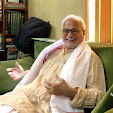Encourage and support: Sri Aurobindo Ashram, Sri Aurobindo Society and Auroville: All these three Institutions have been working sincerely and tirelessly with dedication as per their own schedules in the divine cause for creating the ‘SPIRITUALISED SOCIETY’ at Pondicherry to start with; then steadily such small units shall be studded over across the globe under Indian leadership (Guruhood) and shall act as beacon lights for guiding the humanity now wallowing in Ignorance, Ego and Desires. The marathon-race has to start with the first step of intensive Integral Education amongst the elites. It is noteworthy that Sri Aurobindo Society with its head quarters located at Pondicherry and local centres across the Nation is venturing to start Residential Schools at various places across the Nation on the model of International School at Pondicherry. Bangalore, the growing cosmopolitan city shall be its first destination in this unique venture and needs all encouragement by the Union and State governments. A team of dedicated workers is being organized for this love’s labour.
Of the said 3 Institutions, Auroville-Society is already being administered by the central Govt. Now, we wish and pray that under your undisputed leadership these three spiritual wings of Pondicherry should be fully encouraged and supported by all possible means for their expeditious progress towards evolution of the “Spiritualised Society” in the fast approaching subjective or Spiritual Age elaborated by our Master in his profound essay on ‘Human Cycle’. Harmony amongst these three wings which is not evident now on the surface due to the inherent trouble of the Subtle Collective Ego shall be steadily and certainly established with their group knowledge by identity and this ‘Collective Ego’ shall be transformed into ‘Group Soul’ by the Mother’s abiding Grace. At this juncture, some initiative by the Central Govt. (on the lines of Rajashray being given to Rishis of the hoary past by the noble Emperors like Sri Ram and Sri Krishna) to act as a GOLDEN MEDIATOR can be of great help.
SUMMING UP: It is quite understandable in the present juncture regarding the onerous responsibility of your Govt. in providing suitable drinking water, food, shelter, roads, transport to the crores of underprivileged and rural population, next in providing overall protection from terrorism and mass destruction due to impending nuclear war. But, respected sir, as you have very appropriately referred to the five visions of Sri Aurobindo as the clear road map and “quintessence of India’s present and future work”, in your new year message we appeal to your unique Statesmanship to acquaint the present generation of India in particular and the world in general through all suitable media and all global platforms including UNO with the most practical and the only Sunlit path laid down by Sri Aurobindo, the sole sufficient genious of the age and the first prophet of Life Divine and of perfection on this earth for achieving human unity in peace, harmony and concord.
On the other hand, be it noted by all the knowledgeable statesmen and nationalists at this juncture that even the principles and tenets of our Father of the nation based on moral and ethical virtues are too inadequate to effectively tackle and dabble with the innumerable layers of sub-consciousness and Super-consciousness of Man and collective Man, for redemption of the humanity. It is only the Integral Yoga advocated by Sri Aurobindo and as practiced as an unprecedented spiritual odyssey by him and the Mother and governed by new and dynamic spirituality for world perfection (unlike the traditional spirituality of world rejection) that can successively redeem India, Asia and the world in conformity with the said five visions decreed by the supreme divine and laid bare before Indians through the divine instrumentality of Sri Aurobindo.
We as devotees are also quite aware of your reference to the five cosmic visions in your earlier public speeches also. With this, I conclude my long letter while praying for your indulgence on the issue by sparing some of your most valuable time. I shall be very grateful for a line in reply.
With my best regards. Yours in the Mother’s service. (Shree alias S.V. Sabnis)
